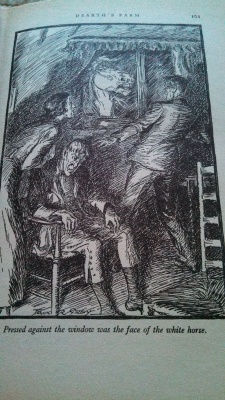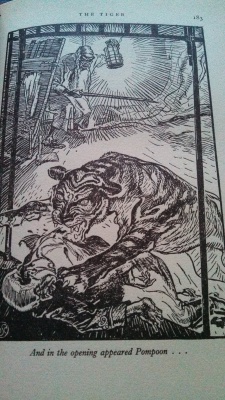
Rik Rawling, “Robert Aickman.”
For those who do not know, there is a fairly new academic journal devoted to the works of Robert Aickman, appropriately called Aickman Studies. It is edited by Tom Baynham and includes Gary William Crawford, Jim Rockhill, and Phillip Challinor on its editorial board. Its first release in January of 2014 included a piece by the venerable Mark Valentine, and it has proceeded apace with biannual updates. (I suppose it’s sort of the “official” Aickman journal, as all submitted pieces are sent to the Aickman estate for approval; this means they go to Leslie Gardner, who now handles the estate).
Ringing in the new year, Aickman Studies has put up its January 2016 release of reviews and criticism of all things related to the world of Robert Aickman. It contains an essay by a favorite of mine, Richard Paul Fox, on “Pages from a Young Girl’s Journal,” in which he does an analysis of epistolary fiction in Gothic and supernatural work; Jim Rockhill’s review of the recent anthology Aickman’s Heirs; Simon Cooke’s review of Tartarus’ latest Aickman release, which contains not only a documentary of the writer, but a lost piece of fiction entitled “The Strangers” as well; and lastly, it contains an essay by myself, “Beyond the Human Compass.” I look forward to reading the other entries, as I have thus far been pressed for time, primarily by my own horrific mis-management of it.
My essay, which is awkwardly sub-titled in classic academic fashion, “The Curiosity Cabinet of Ravissante,” contains discussion of the following things: curiosity cabinets, succubi, sexual organs, horror vs terror, fin de siecle erotic art, Aickman’s dirty jokes, Faust, and the muse. It makes the claim that “Ravissante” is an instance of Aickman ferociously mounting a defense of his aesthetic and providing a blueprint of sorts for the strange tale. I also attempt to draw a provisional history of the strange tale, pointing out the precursors Aickman had in his endeavors, which is something I have not seen many others do before. As I say:
The popular idea that Aickman is a singular entity dropped ex nihilo into the backward fens and fields of supernatural fiction must be replaced with a more truthful and historical image of him as a writer consciously operating within a tradition.
I employ Italo Calvino’s notion of invisibility and the “disincarnation” of the fantastic in Henry James to draw out a list of strange writers:
We can see this trend of invisibility rippling outward from James in a number of Aickman’s predecessors: Barry Pain, Rudyard Kipling, Madeline Yale Wynne, Walter de la Mare, Oliver Onions, John Metcalfe, A.E. Coppard, John Davys Beresford. To one degree or another, all of these writers tended not to hum the standard bars of the ghostly tale, and chose to pipe on a scale altogether more allusive and elusive. They drain the blood from their spectres and dry them on hooks, not in the dining room Uncle Hugh died in, but in the abattoir of their protagonist’s brains. The interior becomes exterior, the fear of death fulminates behind their eyes and its smoke trails out into what Samuel Beckett called “the faint inscriptions of the outer world.” (Beckett, 38) This is a literary territory not of screaming skulls, mephitic puddles of putridity that once were men, or unctuous things in halls. Here, instead, is a literary topography of tiny hillside towns much bigger at night than they have any right to be, enticing attic trunks that swallow children whole, and perfectly non-descript country homes that might actually be way-stations between this world and the alleged next. From this fertile loam Aickman sprang.
I also attempt a rough definition of what the strange tale is, as opposed to the weird tale or the boilerplate supernatural tale. Among other things, it often features a stasis in the spot between the marvelous (fantastic) and unhomely (realistic), which can be instanced in tales such as The Hospice and, of course, the incredibly heady and slippery Ravissante. If I wanted to burn my eyes out with a hot, hissing poker, I might use the term “liminal,” or “liminality,” or say something like, “the ontological liminality of strangeness refuses to be subsumed or inscribed into the Real.” There are a few academic terms that make it into the essay, but not many (‘ontological’ I confess, is one of them), and after writing this piece I think I’d like to sand my work even cleaner of unnecessary jargon.
The strange sub-genre does not so much have unique features as it has commonplace features enlarged to deformity. The primary characteristics of strange fiction – ambiguity, dream-logic, and sexuality (repressed or overt) – are all present in traditional supernatural and ghostly fiction. It is simply that these elements have metastasized and, as a result, transcend the fireside club-tale conformity found in the work of Arthur Conan Doyle and Sabine Baring-Gould. Resolution, conventional sentiment, and standard manifestations of the occult are all undermined. Mystery and the uncanny are elevated. The text becomes a catafalque of dream-imagery unencumbered by rationality.
Although the essay is essentially a special-interest piece directed towards the small number of readers who have read “Ravissante,” I think that Aickman is of interest to anyone who loves literature, and I have attempted to leaven and season the piece with humor and something resembling sensuous turns of phrase. It is in fact based off a fragment I wrote for this blog in 2013 (Christ all-fucking-mighty! Three years ago!) called “The Magnetic Under-mind.” With the encouragement of being published, I am likely to submit further work to Aickman Studies and Wormwood.
Again, regular updating of this blog is constantly running against the wall of my indolence and poor time management. I am working on a post on Samuel R. Delany and the imprecise usage of genre classification, primarily by those writing on the so-called “literary fiction” side of the fence, (which, if I actually put effort into it, might show what modest skill I possess for calumny and vituperation; all in good fun) and a review of Shamus Frazer’s Where Human Pathways End.



























